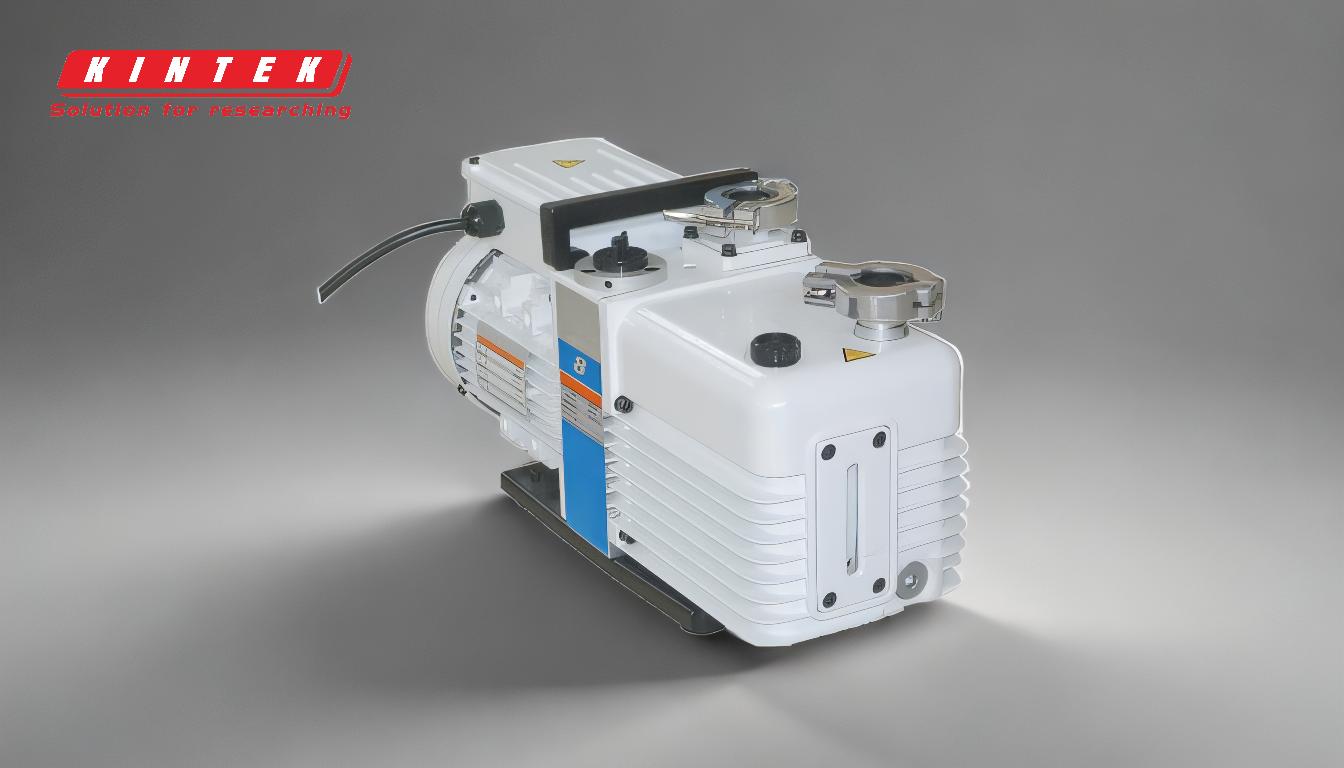The primary difference between 1-stage and 2-stage vacuum pumps lies in their design, performance, and applications. A 1-stage vacuum pump operates with a single compression stage, making it simpler and more cost-effective but limited in its ability to achieve lower pressure levels. In contrast, a 2-stage vacuum pump uses two compression stages in series, enabling it to achieve significantly lower pressure levels and higher vacuum efficiency. This makes 2-stage pumps more suitable for applications requiring deeper vacuum levels, such as in vacuum furnaces. Additionally, 2-stage pumps often provide better performance in terms of stability, reliability, and energy efficiency compared to 1-stage pumps.
Key Points Explained:

-
Design and Operation:
- 1-Stage Vacuum Pump: Operates with a single compression stage. Air or gas is compressed once before being expelled from the system.
- 2-Stage Vacuum Pump: Utilizes two compression stages in series. The gas is compressed in the first stage and then further compressed in the second stage, allowing for a deeper vacuum.
-
Vacuum Level Achieved:
- 1-Stage Vacuum Pump: Typically achieves a moderate vacuum level, suitable for applications that do not require extremely low pressures.
- 2-Stage Vacuum Pump: Can achieve significantly lower pressure levels, often reaching higher vacuum levels than 1-stage pumps. For example, a 2-stage system can increase the pressure level of a vacuum furnace from atmospheric pressure to 4.5 x 10^-2 Torr.
-
Performance and Efficiency:
- 1-Stage Vacuum Pump: Simpler design but less efficient in achieving deep vacuum levels. It may struggle with maintaining consistent performance under demanding conditions.
- 2-Stage Vacuum Pump: Offers better performance in terms of stability and reliability. The dual-stage compression allows for more efficient gas removal, making it ideal for applications requiring consistent and deep vacuum levels.
-
Applications:
- 1-Stage Vacuum Pump: Suitable for basic vacuum applications such as degassing, packaging, and simple laboratory tasks.
- 2-Stage Vacuum Pump: Ideal for more demanding applications, such as vacuum furnaces, where achieving and maintaining a deep vacuum is critical. It is also used in industries requiring high precision and reliability.
-
Energy Efficiency:
- 1-Stage Vacuum Pump: Generally consumes less energy due to its simpler design but may require more energy to achieve higher vacuum levels.
- 2-Stage Vacuum Pump: While it may consume more energy overall, it is more energy-efficient in achieving deeper vacuum levels, making it a better choice for applications where energy efficiency is a priority.
-
Cost Considerations:
- 1-Stage Vacuum Pump: Typically less expensive to purchase and maintain due to its simpler design and fewer components.
- 2-Stage Vacuum Pump: More expensive upfront and in maintenance due to its complex design and additional components. However, the investment is justified for applications requiring deeper vacuum levels and higher performance.
-
Maintenance and Longevity:
- 1-Stage Vacuum Pump: Easier to maintain and repair due to its simpler design. However, it may have a shorter lifespan when used in demanding applications.
- 2-Stage Vacuum Pump: Requires more maintenance due to its complex design but often has a longer lifespan, especially when used in applications that match its capabilities.
In summary, the choice between a 1-stage and 2-stage vacuum pump depends on the specific requirements of the application. For basic tasks, a 1-stage pump may suffice, but for more demanding applications requiring deeper vacuum levels and higher performance, a 2-stage pump is the better option.
Summary Table:
| Aspect | 1-Stage Vacuum Pump | 2-Stage Vacuum Pump |
|---|---|---|
| Design | Single compression stage | Two compression stages in series |
| Vacuum Level | Moderate vacuum levels | Significantly lower pressure levels |
| Performance | Less efficient for deep vacuum levels | Better stability, reliability, and efficiency |
| Applications | Basic tasks (degassing, packaging, simple lab work) | Demanding applications (vacuum furnaces, high-precision industries) |
| Energy Efficiency | Consumes less energy but struggles with deeper vacuum levels | More energy-efficient for achieving deeper vacuum levels |
| Cost | Lower upfront and maintenance costs | Higher upfront and maintenance costs |
| Maintenance | Easier to maintain but shorter lifespan in demanding applications | Requires more maintenance but longer lifespan in suitable applications |
Need help selecting the right vacuum pump for your application? Contact our experts today for personalized advice!








